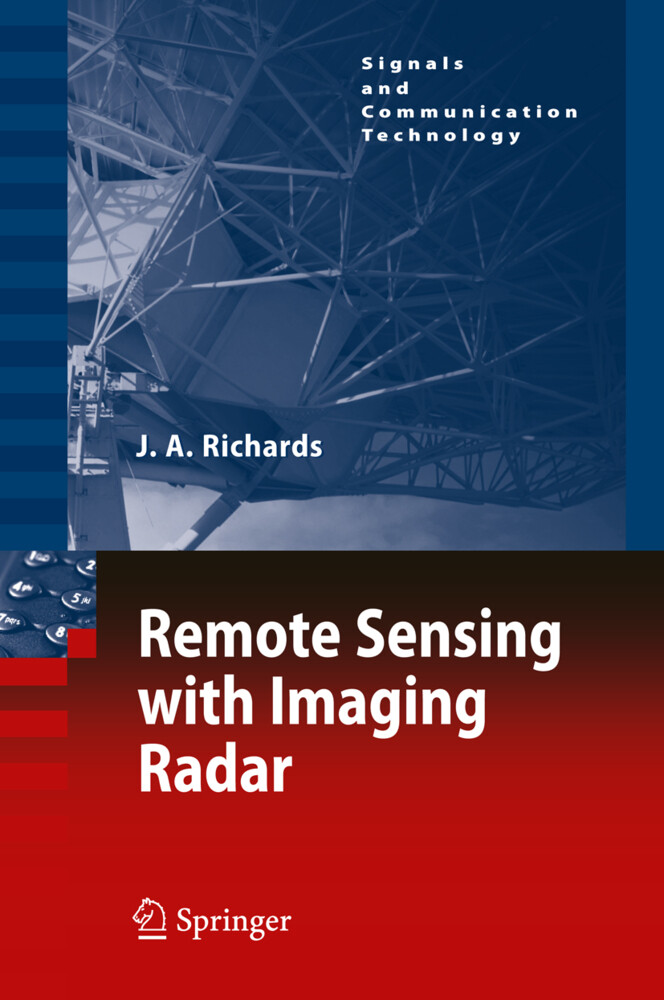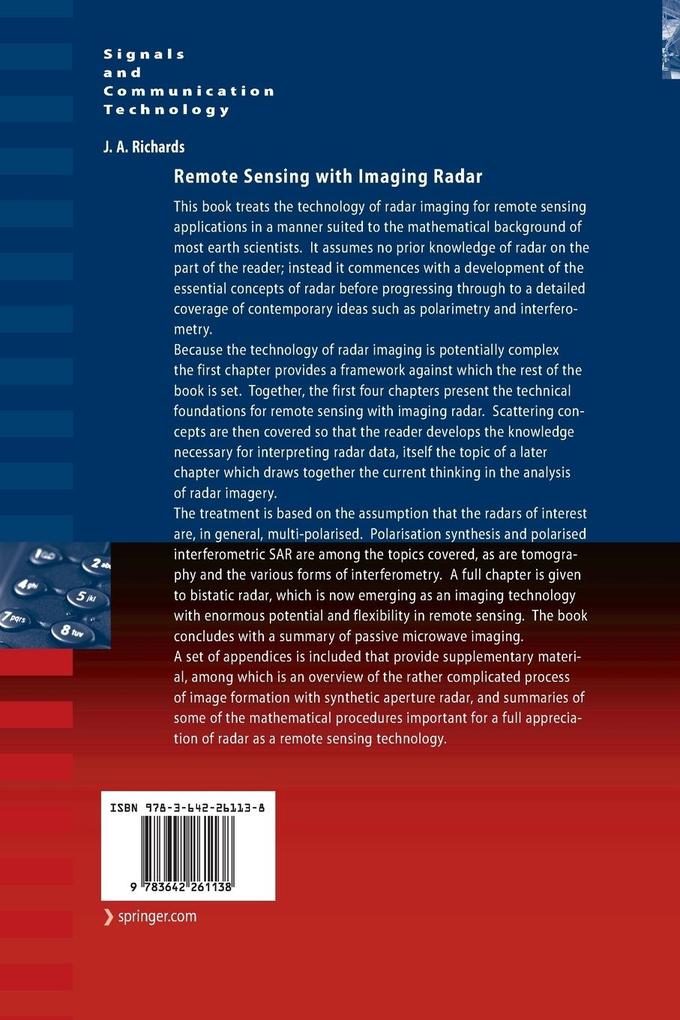
Zustellung: Mo, 07.07. - Mi, 09.07.
Versand in 2 Tagen
VersandkostenfreiBestellen & in Filiale abholen:
This book develops the technology of radar imaging, and an understanding of scattering concepts, in a manner suitable to the mathematical background of most earth scientists. The approach allows for quick movement to the practical aspects of imaging.
This book is concerned with remote sensing based on the technology of imaging radar. It assumes no prior knowledge of radar on the part of the reader, commencing with a treatment of the essential concepts of microwave imaging and progressing through to the development of multipolarisation and interferometric radar, modes which underpin contemporary applications of the technology. The use of radar for imaging the earth s surface and its resources is not recent. Aircraft-based microwave systems were operating in the 1960s, ahead of optical systems that image in the visible and infrared regions of the spectrum. Optical remote sensing was given a strong impetus with the launch of the first of the Landsat series of satellites in the mid 1970s. Although the Seasat satellite launched in the same era (1978) carried an imaging radar, it operated only for about 12 months and there were not nearly so many microwave systems as optical platforms in service during the 1980s. As a result, the remote sensing community globally tended to develop strongly around optical imaging until Shuttle missions in the early to mid 1980s and free-flying imaging radar satellites in the early to mid 1990s became available, along with several sophisticated aircraft platforms. Since then, and particularly with the unique capabilities and flexibility of imaging radar, there has been an enormous surge of interest in microwave imaging technology. Unlike optical imaging, understanding the theoretical underpinnings of imaging radar can be challenging, particularly when new to the field.
Inhaltsverzeichnis
The Imaging Radar System. - The Radiation Framework. - The Technology of Radar Imaging. - Correcting and Calibrating Radar Imagery. - Scattering from Earth Surface Features. - Interferometric and Tomographic SAR. - Bistatic SAR. - Radar Image Interpretation. - Passive Microwave Imaging.
Produktdetails
Erscheinungsdatum
14. März 2012
Sprache
englisch
Auflage
2009
Seitenanzahl
384
Reihe
Signals and Communication Technology
Autor/Autorin
John A. Richards
Verlag/Hersteller
Produktart
kartoniert
Abbildungen
XIX, 361 p.
Gewicht
581 g
Größe (L/B/H)
235/155/21 mm
ISBN
9783642261138
Entdecken Sie mehr
Pressestimmen
From the reviews:
This treatise is mostly targeted at Earth scientists, remote-sensing practitioners, and senior undergraduate or graduate students. the book successfully provides clear insights into all key concepts without resorting to complex mathematical tools. This book addresses with outstanding clarity all of the main issues associated with the physics, technology, and use of radar as an imaging tool for remote sensing. an excellent reference and a rich source of information for remote-sensing scientists, users, and students. (Sebastiano B. Serpico, IEEE Geoscience and Remote Sensing Society Newsletter, June, 2012)
Bewertungen
0 Bewertungen
Es wurden noch keine Bewertungen abgegeben. Schreiben Sie die erste Bewertung zu "Remote Sensing with Imaging Radar" und helfen Sie damit anderen bei der Kaufentscheidung.










